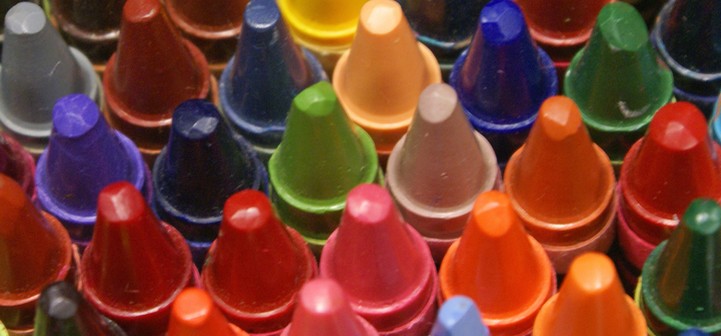
A common dilemma child care providers face is children who are critical of their own or another child’s art. These children may dislike their own art, have unreasonable expectations or standards or criticize another child’s art. Children of all ages may be critical of their art, but older children are more interested in drawing realistically and may be most critical when their artwork does not turn out as planned. Here are some suggestions you might try when children criticize their own or others’ artistic efforts.
Children Who Are Critical of Their Art
-
Situation: Some children are very critical of their own art. They may tear up picture after picture because it does not turn out the way they think it should. Some children dislike their art because it does not match their mental image. Others have poor self-concept and doubt their own ability to create art.
-
Suggestion: Children who criticize their art may need heavy doses of praise and support. You may intervene by saying, “Oh, Carmen, please let me have your picture to put on the wall with the other pictures. If you want to make another to take home, go right ahead.”
-
Second suggestion: If the child is concerned about improving her art, provide her with tools, techniques, or alternative media that will help her improve — for example, rulers for straighter lines, computer drawing software, photos as models. Check to see if the child is having a particular problem – using red paint on red paper, for example. Think of a question to ask, such as, “I wonder if we could see your picture better if you used a different color of paper? Here is some other paper. Would you like to try one of these?”
Children Who Set Unreasonable Expectations for Their Artwork
-
Situation: Some children set themselves up for disappointment when creating art. They may expect photographic realism that they are developmentally incapable of producing. They may want perfect pictures without smudges, runs or tears. Or they may insist that the artwork is not good enough unless it matches perfectly their mental picture.
-
Suggestion: Help refocus the child on the positives of his artwork. You could say, “Teddy, I enjoy seeing all the bright colors in your picture. Sometimes when we are painting we get wonderful surprises. Look – where the colors have run together here, you have new colors.” For an older child, say, “January, remember you are making your idea of a rainbow, not taking a picture with a camera. I think your rainbow is just as colorful as the ones I see in the sky.”
-
Second suggestion: Keep a portfolio of past art work for each child. If one child is really feeling like he isn’t drawing as well as he should, pull out the portfolio and look together at the changes over time in his artistic abilities. Looking at examples of how his art skills have improved could also help a child with low self-esteem.
Children Who Criticize Another Child’s Art
-
Situation: Some children make unkind or critical remarks about other children’s artwork. Greg might look at Sam’s picture on the other side of the easel and say, “Your picture is dumb. It doesn’t look like anything.” Sam’s feelings are hurt and he begins to cry. What can the teacher do?
-
Suggestion: Children need to know that it’s not acceptable to criticize another person’s art idea or work. The teacher can say, “Sam has worked very hard at painting his picture. Pictures can be bright colors or different shapes. They don’t have to look like anything. Remember, this is Sam’s picture.”
-
Second suggestion: Show children a variety of different examples of artwork created by professional artists. Talk about which pieces you like and don’t like. Point out that we all gets to decide for ourselves what we think is beautiful. Make sure children realize that another child may be very happy with her artwork and criticizing what she thinks is beautiful can hurt her feelings.
For More Information
To learn more about art in child care, and ways to make young children’s art experiences effective, take a look at the following eXtension Alliance for Better Child Care articles:
- Planning a Successful Art Center
- Balancing Process and Product in Creative Art Activities
- Praise Effort Instead of Product When Discussing Children’s Art
- Avoid Activities Masquerading as Creative Art in Child Care Settings
- Ways Child Care Providers Can Encourage Children Who Don’t Like Art
- Ways Child Care Providers Can Support Children Who Have Trouble Getting Started with Creative Art
- Ways Child Care Providers Can Support Children Who Run into Problems Doing Art
Photo by laffy4k / CC BY http://creativecommons.org/licenses/by/2.0/
